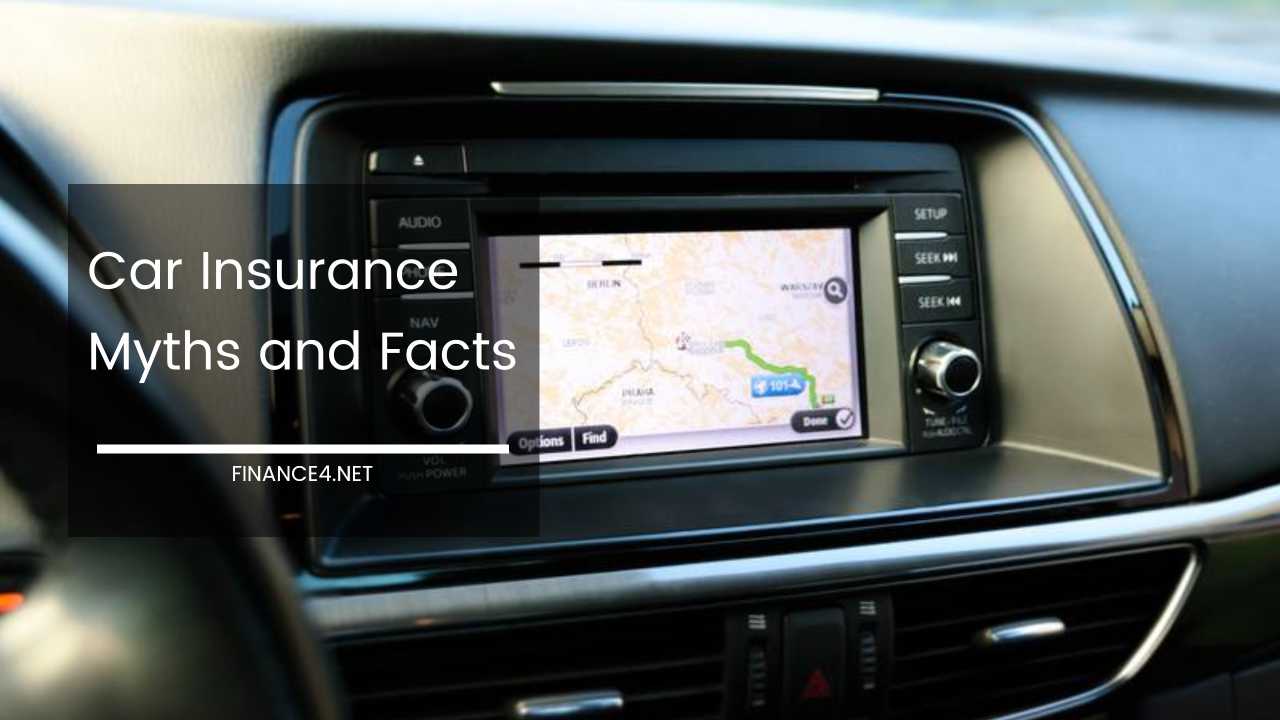The Ultimate Guide to Car Insurance Myths & Facts

Car Insurance Myths and Facts: Unsure About Your Coverage? Get the Straight Scoop Here!
Car insurance can feel like a labyrinth of legalese and hidden clauses. Between deciphering coverage options and understanding how premiums are calculated, it’s easy to get tangled up in myths and misconceptions.
These myths can lead to costly mistakes, leaving you financially vulnerable on the road.
Let’s dispel some of the most common car insurance myths and equip you with the knowledge to make informed decisions:
Myth 1: Newer Cars Cost More to Insure (Busted!)
Fact: The allure of advanced anti-theft features in newer models makes them less attractive to criminals compared to older vehicles.
Additionally, some insurers view younger drivers as a higher risk, and older cars tend to be their go-to rides. So, depending on the make, model, and your age, a shiny new car might not be as expensive to insure as you think.
Myth 2: Full Coverage Pays for Everything Stolen from My Car (Not Quite True)
Fact: Coverage for personal belongings in your car typically has a limit. If your prized possessions like laptops or tablets exceed that limit, you’ll be left footing the bill.
It’s crucial to check your policy details and avoid leaving valuables unattended in your car – an easy target for opportunistic thieves.
Myth 3: Convictions Equal No Insurance (Not Necessarily)
Fact: While a conviction can translate to a higher premium due to a perceived increased risk, it doesn’t automatically disqualify you.
The severity of the offense plays a role, but you should still be able to find coverage, albeit at a potentially steeper cost.
Myth 4: Excess Only Applies When I’m At Fault (Think Again)
Fact: The excess, or deductible, is the portion you pay towards a claim regardless of who caused the accident. You might get this amount back if the insurer recovers the full cost from the at-fault party, but be prepared to pay upfront.
Opting for a higher excess usually lowers your premium, but consider the financial burden you can handle in case of a claim. Striking the right balance between affordability and financial protection is key.
Myth 5: Sharing Gas Money with Passengers Affects Insurance (Not Usually)
Fact: As long as you’re not profiting from rideshare services like Uber or Lyft, carpooling and splitting gas with friends shouldn’t affect your insurance.
However, ensure your policy covers social, domestic, and pleasure use. Business use often requires additional coverage to ensure you’re properly protected.
Myth 6: Double Dipping with Two Insurers is a Smart Move (Absolutely Not!)
Fact: Having multiple car insurance policies for the same vehicle is a recipe for disaster. It creates confusion for both insurers and could lead to claim denials.
In rare cases, temporary coverage might be allowed when your main policy doesn’t cover something specific, but always be upfront with both insurers to avoid any complications.
Myth 7: Smashed Windscreens Kill Your No Claims Bonus (Usually Not True)
Fact: In most cases, a windscreen claim won’t affect your No Claims Bonus (NCB), which rewards you for claim-free periods.
However, always double-check your policy details and be prepared to pay the excess. Some insurers might offer special windscreen coverage with a lower excess specifically for these situations.
Myth 8: No MOT or Tax Disc, No Insurance (It Depends)
Fact: The impact of missing an MOT (Ministry of Transport test) or tax disc on your insurance validity varies by insurer.
While some might cancel your policy, others might simply require your car to be roadworthy. Regardless, driving without an MOT or tax disc is illegal and carries fines.
Keeping your car up-to-date with these requirements is not just about insurance, but also about ensuring your vehicle is safe for yourself and others on the road.
Myth 9: Car Color Affects Premiums (Nope!)
Fact: Insurers focus on practical factors that impact risk, like engine size, safety features, and car age, not aesthetics. A cherry-red sports car won’t automatically cost more to insure than a practical beige minivan.
Myth 10: Loyalty Gets You Discounts (Always) (Not Guaranteed)
Fact: While a No Claims Bonus rewards loyalty to a certain extent, insurers aren’t obligated to offer lower premiums just because you’ve been with them for a while.
The recent auto insurance renewal scandal highlights this issue, where companies renewed policies without clear customer consent.
It’s crucial to be a proactive consumer and compare quotes from different insurers before renewing your policy. Don’t assume loyalty equals the best deal.
Myth 11: Safe Drivers Don’t Need Insurance (A Dangerous Misconception)
Fact: This is a dangerous misconception that can leave you financially exposed. Being a safe driver doesn’t guarantee you’ll never be in an accident.
Unforeseen circumstances like bad weather, mechanical failures, or other drivers’ mistakes can all lead to collisions.
Insurance protects you financially in case of these unforeseen events, regardless of fault. Driving uninsured is illegal and carries severe consequences, including fines, license suspension, and even personal liability for damages caused to others.
Myth 12: Credit History Doesn’t Matter (It Does!)
Fact: Many insurers consider your credit history when calculating premiums. A poor credit score suggests a higher risk of late payments on your insurance premiums.
This can potentially lead to a higher premium or even difficulty obtaining coverage altogether. Maintaining a good credit score can benefit you in many ways, including potentially lowering your car insurance costs.
Beyond the Myths: Additional Tips for Smart Car Insurance
Understanding car insurance myths is just the first step. Here are some additional tips to navigate the world of car insurance like a pro:
- Shop Around and Compare Quotes: Don’t settle for the first offer you receive. Get quotes from multiple insurers to ensure you’re getting the best possible rate for your coverage needs.
- Understand Your Coverage: Take time to read and understand your policy details. Know what is and isn’t covered, and don’t hesitate to ask your insurer questions if anything is unclear.
- Review Your Policy Regularly: Your needs and circumstances can change over time. Regularly review your policy to ensure it still meets your current coverage requirements.
- Maintain a Clean Driving Record: Traffic violations and accidents can significantly increase your premium. Practice safe driving habits to keep your record clean and potentially qualify for discounts.
- Take Advantage of Discounts: Many insurers offer discounts for things like low mileage, defensive driving courses, good student grades (for young drivers), and insuring multiple vehicles with the same company.
- Raise Your Deductible (if Financially Feasible): Choosing a higher excess allows you to lower your premium. However, only do this if you can comfortably afford to pay the excess amount in case of a claim.
By debunking car insurance myths, educating yourself, and following these smart tips, you can make informed decisions and ensure you have the right car insurance coverage at the most competitive rate.
Remember, car insurance is there to protect you financially in case of the unexpected. Don’t let myths and misconceptions leave you vulnerable on the road.



